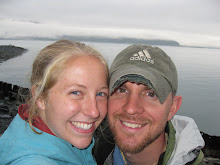"Orchestrating the Media Collage"
by Jason Ohler
Overview
This article introduces reading and writing multiple forms of media and how integrating the two creates an entirely new meaning of the word “literacy.” By definition, literacy is a noun, meaning the ability to read and write. However, “Orchestrating the Media Collage” by Jason Ohler points out that the deeper meaning of literacy goes far beyond the walls of English classrooms. Ohler said that literacy can include reading and writing competencies in math, research and even citizenship. But the most important form of literacy, he said, is digital literacy. It’s no secret we live in a technologically driven world and those who fail to keep up with its ever-evolving jargon will be left in the dust of discarded textbooks.
In the “Writing What You Read” section, Ohler explains that having an ability to read and write today isn’t good enough. Digital expression can be narrowed into three categories: 1. New media demand new literacies, such as sound, graphics and images; 2. New media coalesce into a collage with Web pages, blogs and digital stories; 3. New media are largely participatory, social media by using collaborative publications such as Facebook, GoogleDocs and YouTube. These categories have changed the Internet from a read-only resource to a worldly community where the exchange of information is nearly limitless and forces the public to be more hands on and creative with their work.
Ohler lines out eight guidelines for teachers who want students to hone their digital literacy skills: 1. Shift from text centrism to media collage; 2. Value writing and reading now more than ever; 3. Adopt art as the next R; 4. Blend traditional and emerging literacies; 5. Harness report and story; 6. Practice private and participatory social literacy; 7. Develop literacy with digital tools and about digital tools; 8. Pursue fluency. Ohler ends the article urging teachers who feel overwhelmed with technology to step back and chill out – teachers don’t need to know everything; let the students discover technology for themselves because it’s more than likely they know more than you do.
